Best 12V Cordless Multi-Head Drill Driver
Best 12V Cordless Multi-Head Drill Driver Head-to-Head
This category has been around a long time, or at least there has been one multi-head compact cordless drill around for a long time and that’s the Festool CXS. As best we can tell the first version of it was released in Europe over 8 years ago (that’s a lifetime in cordless tools!). Other than some minor changes and improved battery technology not much has changed on the current version of the CXS. But it’s popularity here in the US has clearly pushed other manufacturers to take notice. In fact, the recent release of the Milwaukee 2505 looks like a close relative of the CXS.
Multi-head cordless drill drivers are becoming more popular these days. Mostly due to their lightweight, compact size, ability to provide access in uniquely challenging locations, and precision drilling and driving control. The electrical, plumbing and installation trades will benefit most from these tools as they provide the best access and feature-rich accessories in one tool. These are best thought of as “installation” drivers used in the finishing stages of construction and remodeling.
Multi-head drill drivers use interchangeable attachments to address different installation situations, such as:
- ¼” Hex Quick Release Bit Holder
- 3/8” Keyless Chuck
- ¼” Hex Quick Release Offset Bit Holder
- Right Angle Attachment
With these compact cordless tools combined with the accessories mentioned above, one kit can tackle a wide range of tasks on the job without requiring multiple cordless tools. The flexibility and portability capabilities that these multi-head drill drivers offer are quite impressive.
12V Cordless Multi-Head Drill Driver Evaluation Format
For this head-to-head evaluation, the following categories will be used to calculate the overall winner of the best 12v cordless multi-head drill driver.
- Features – This category isn’t typically included in our rankings. However, with this type of tool that offers multiple heads, the feature set is an important consideration on which tool may be best for you.
- Ergonomics – This category is a subjective comparison ranked by our group of testers. Each guy that worked on the performance tests ranks the ergonomics categories after using the tools.
- Performance – For this category two tests were developed to help give a relative comparison of performance. One test included the speed of fastener installation and the other test was a power test comparing speed to drill larger diameter holes.
- Price – For this category, the current (at time of publication) price is compared and ranked. We’ve recently decided to only count the ranking of price 50% towards the final rankings as we feel the pricing isn’t quite as important as the other categories.
12V Cordless Multi-Head Drill Driver Lineup
For this evaluation five compact 12-volt cordless multi-head drill drivers were selected including:
- Bosch Flexiclick Drill/Driver System GSR12V-140FCB22
- Festool 564535 CXS Li-Ion Cordless Drill Set w/ Right Angle Chuck
- Metabo PowerMaxx BS 12 BL Q Cordless Drill / Screwdriver
- Milwaukee M12 FUEL Drill/Driver Installation Kit 2505-22
- Hilti SFE 2-A12 Subcompact Class 12V Drill Driver
Bosch Flexiclick® 5-In-1 Drill/Driver System GSR12V-140FCB22
- RPM Low 0-400
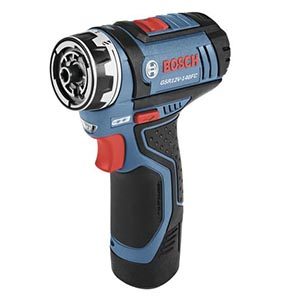
- RPM High 0-1300
- Max Torque 265 In. lbs
- Chuck 3/8”
- Right Angle Yes
- Offset Attachment Yes
- ¼” Hex Attachment Yes
- Head Indexing Positions 12
- Weight (w/ battery) 1.8 lbs
- Height 7-3/8”
- Length 5-3/16”
- Width 2”
- Bosch Flexiclick
Festool 564535 CXS Li-Ion Cordless Drill Set w/ Right Angle Chuck
- RPM Low 0-430
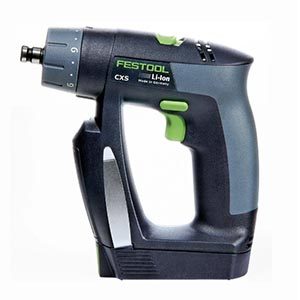
- RPM High 0-1300
- Max Torque 142 In. lbs
- Chuck 3/8”
- Right Angle Yes
- Offset Attachment No
- ¼” Hex Attachment Yes
- Head Indexing Positions 16
- Weight (w/ battery) 2.0 lbs
- Height 6-7/8”
- Length 6-1/2”
- Width 2-1/2”
- Festool 564535 CXS
Hilti SFE 2-A12 Subcompact Class 12V Drill Driver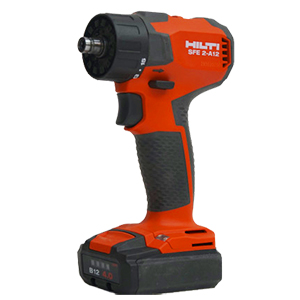
- RPM Low 0-400
- RPM High 0-1600
- Chuck 1/2”
- Right Angle Yes
- Offset Attachment Yes
- ¼” Hex Attachment Yes
- Clutch 12 settings
- Weight (w/ battery) 2.2 lbs
- Height 6.9”
- Length 5.1”
- Width 2.7”
- Hilti SFE 2-A12
Metabo PowerMaxx BS 12 BL Q Cordless Drill / Screwdriver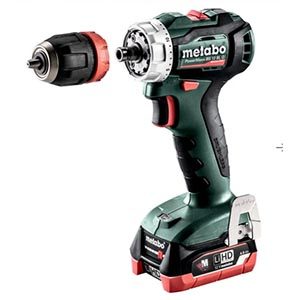
- RPM Low 0-500
- RPM High 0-1650
- Max Torque 398 In. lbs
- Chuck 3/8”
- Right Angle Yes
- Offset Attachment Yes
- ¼” Hex Attachment Yes
- Head Indexing Positions 12
- Weight (w/ battery) 1.9 lbs
- Height 9”
- Length 4-13/16”
- Width 3”
- Metabo PowerMaxx BS 12 BL Q
Milwaukee M12 FUEL Drill/Driver Installation Kit 2505-22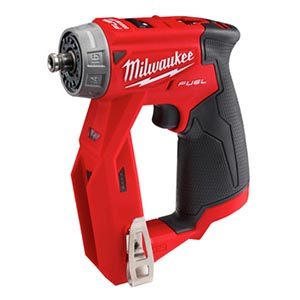
- RPM Low 0-400
- RPM High 0-1600
- Max Torque 300 In. lbs.
- Chuck 3/8”
- Right Angle Yes
- Offset Attachment Yes
- ¼” Hex Attachment Yes
- Head Indexing Positions 16
- Weight (w/ battery) 2.0 lbs
- Height 7-3/8
- Length 5-3/4”
- Width 1.8”
- Milwaukee M12 FUEL Drill
Comparison of Features
Winners – Tied Metabo and Milwaukee
By the very nature of a multi-head drill driver, these are full of features and it’s a great place to start our evaluation and comparison. While we didn’t rank all features (some are similar for all, like all offer a right angle attachment and they are all similar) we did rank ones that had variations that may be important to users when choosing a new tool. For this comparison the following items were ranked:
- LED Light – This is a subjective comparison of how effective the LED light is. Considering these are “installation” drivers good lighting is crucial in tight spaces.
- MAX Torque – This is from the published values. Small compact drill drivers can benefit greatly from higher torque values as it allows a wider range of fastener applications.
- Offset Reach – This is a measure of how close each of the offset heads can install a fastener up against a side obstruction.
- Storage – The team evaluated and compared the storage bags/boxes that ship with these drills. The team felt this was important for a tool that has multiple accessories that must be stored, and ideally not lost when moving from job to job.
LED Light
LED lighting on tools has come a long way. Years ago companies just put a light on to say they had one. Today, there’s a lot of focus on having an effective light that truly lights the work area. For this evaluation, we lined up the tools next to each other to subjectively rank the lighting. Our team ranked the LED lights as follows:
- Festool clearly had the best overall distribution of light. The light was diffused nicely with no hot spot and lit up a much larger area. One downside to the Festool was the light does NOT stay on after releasing the trigger.
- Hilti came in a close second with a similar light pattern to the Festool but not quite as bright.
- Milwaukee has a really bright light and does a good job lighting the work area, but it does have a rather large hot spot that is a bit too bright compared to the Festool and Hilti.
- The LED location on the Metabo created a clean diffused light that clearly defined the work area. The light just isn’t as bright as some of the others.
- Bosch is bright but spotty and yellow-colored and can be blocked by fingers, creating a shadow. Overall the Bosch diffusion was not great.
Maximum Torque
With smaller compact tools torque isn’t exactly at the top of the list of features we think about. However, with a tool that’s designed to perform a wide range of applications we feel having some extra torque certainly is a benefit. This is a comparison based purely on the published torque values.
Offset Reach
One of the really cool accessories that most (all but the Festool) of these drills offer is an offset head. Offset heads are invaluable to anyone doing installation work where tight spaces and fasteners located close to obstructions must be installed. So the real question is how close can you get? Each drill driver was placed up tight against a sidewall obstruction and a screw was installed. The distance from the sidewall and center of fastener was measured to create the ranking.
Storage
With a multi-head tool like these having a good storage solution is paramount to protect your investment and keep things organized. The rankings for storage are included below:
- Festool – Festool CXS comes packaged in a Festool Systainer storage box with a photo showing accessory placement. For a tool with lots of accessories, the Systainer is easily the nicest storage option of all these tools.
- Milwaukee – Milwaukee has a soft case that has individually defined accessory compartments (not specific) to the accessories. The team liked that the compartments are not designed to any specific accessory, “just throw them in there and you’re done”. The soft case has plenty of room for all the accessories and additional bits.
- Metabo – Metabo comes in a molded plastic case with plenty of room for accessories. However, there are no compartments for the various attachments for the tool.
- Hilti – Hilti comes with a soft bag with no specific compartments. While this bag doesn’t have compartments, it is much larger than the Bosch allowing for more accessories.
- Bosch – The Bosch comes with a soft canvas case. The Bosch soft bag uses elastic bands to secure accessories, with no indication of which accessory goes where. Also, the bag is quite small with little to no extra room for additional accessory storage.
Stand-Out Features
Several tools also had some unique or stand-out features worth mentioning that were not considered in the rankings.
- Keyless Drill Chuck – All of the tools with the exception of the Hilti have a 3/8″ keyless chuck. The Hilti has a 1/2″ chuck which awesome!
- Accessory Holders – Magnetic bit holder holds multiple bits on board to save time when switching accessories. Both the Festool and Milwaukee magnets worked well. The Bosch and Metabo both come with ¼” hex clip style accessory holders that worked fine for what they are but the team preferred the lower profile and ease of use of the magnetic bit holders as well as the flexibility to hold metallic fasteners.
- Note on the Festool Centrotec Accessories – The Festool CXS can only accept their proprietary Centrotec accessories in its quick-release bit holder. The Centrotec line has a unique shaft that is a slightly different size and much longer than standard ¼” hex accessories. Unfortunately, this limits what accessories can be used with the tool and the only way around it is to chuck ¼” hex bits into the three-jaw drill chuck or with some third party adapters. Either of these options will add additional length and bulk to the tool.
Overall Features Results
For this category, there was a tie between Metabo and Milwaukee for the top spot. Both did very well in the torque and offset reach comparison. Following up in second was Festool followed by Hilti in third. The results are shown in the table below.
| LED Light | Max Torque | Offset Reach | Storage | TOTAL | RANK | |
|---|---|---|---|---|---|---|
| Metabo | 4 | 1 | 1 | 3 | 9 | 1 |
| Milwaukee | 3 | 2 | 2 | 2 | 9 | 1 |
| Festool | 1 | 5 | 5 | 1 | 12 | 2 |
| Hilti | 2 | 4 | 4 | 4 | 14 | 3 |
| Bosch | 5 | 3 | 3 | 5 | 16 | 4 |
Ergonomics Evaluation
Winner – Milwaukee
Ergonomics is the science of designing and producing tools that improve a worker’s efficiency while reducing discomfort, fatigue, and risk of injury. The key point to consider is whether or not the tool eases your work and prevents you from straining in ways that could lead to injury. Ergonomics is the most difficult evaluation in these head-to-head evaluations due to the subjective nature of ergonomics. Tools companies have all invested a lot of time, money and research into designing their tools to provide superior balance and ergonomics.
For each category, the team ranked them 1-5, (1 being the best). With everyone on the team using drills differently throughout our normal workday, this was a great way to develop a consensus on which tools we felt were the most comfortable for users. We held the 1 score for the tool that was truly outstanding in that category.
For the ergonomics section the team used the tools and evaluated the following:
- Weight – Each tool was weighed with the battery installed.
- Size (equivalent box volume – HxWxL) – While these tools are not “boxes” it’s a relative way to compare the “size” of the tools by multiplying the length, wide and height.
- Grip – This is a subject evaluation where each team member ranked the grip and the tools were ranked by the cumulative score.
- Balance – This is a subject evaluation where each team member ranked the balance and the tools were ranked by the cumulative score.
- Switch Placement (Ease of Use) – This is a subject evaluation where each team member ranked the switch placement (how easy the switches are to operate) and the tools were ranked by the cumulative score.
- Accessory Attachment – Head Change – In this category, each team member ranked the drills on how easy it was to change heads on the drills.
- Accessory Adjustment – Head Adjust – In this category, each team member ranked the drills on how easy it was to adjust the accessory heads.
Weight
All five tools are compact and lightweight. For this category, each tool was weighed with the battery attached. Bosch was the lightest at 1.8 lbs and Hilti was the heaviest at 2.2 lbs. All of the weights are shown in the chart below.
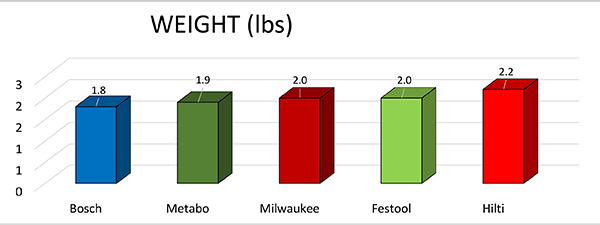 Size
Size
Trying to compare size is an interesting conversation with tools that are configured in so many different shapes. For this comparison, the “box” volume was calculated to give a relative comparison of overall size. The “box” volume was calculated by multiplying the length, width, and height. Bosch had the smallest size at 80.3 cubic inches with Metabo being the largest at 129.9 cubic inches. All of the volumes are shown in the chart below.
Grip
The grip rankings are a subjective evaluation by our team of testers. The final grip ranking is based on the cumulative ranking from all testers, with their eues closed. The final results can be seen in the table below.
Switch Placement
The switch placement rankings are a subjective evaluation by our team of testers. The final switch placement ranking is based on the cumulative ranking from all testers. The final results can be seen in the table below.
Accessory (Head) Attachment
The Milwaukee has the easiest accessory attaching and detaching feature (it has precise tolerances on the machining). The Bosch came in as a close second. One ding on the Bosch is that when wearing gloves, and adjusting the clutch – the accessory can become accidentally disengaged. This happened quite a bit during this testing. The Metabo attachments were the most difficult and awkward to attach and detach. The final rankings can be seen in the table below.
The Milwaukee attachments go on like butter ~ Jeff Deitz
Accessory (Head) Adjustments
Bosch has the BEST adjustment on the 90 degrees and offset attachments. This is due to its spring-loaded, pull forward feature that lets you quickly and easily rotate the two attachment heads. While changing accessories on the Metabo was more difficult than the other tools in the test, adjusting the 90-degree and offset attachments was quite easy. Just pull back on the red retention ring and rotate the attachment to the desired position.
The Milwaukee Attachments connect in 16 different positions for access at almost every angle and is easy to accomplish. The Milwaukee was easy to adjust as well but required partially removing the attachment and rotating it. The Festool also required partially removing the right-angle attachment to rotate it into the desired position.
The final rankings are shown in the table below.
| Weight | Size | Grip | Balance | Switches | Head Change | Head Adjust | TOTAL | RANK | |
|---|---|---|---|---|---|---|---|---|---|
| Milwaukee | 3 | 2 | 3 | 3 | 1 | 1 | 2 | 15 | 1 |
| Bosch | 1 | 1 | 5 | 4 | 2 | 3 | 1 | 17 | 2 |
| Hilti | 4 | 4 | 1 | 2 | 2 | 2 | 3 | 18 | 3 |
| Festool | 3 | 3 | 4 | 3 | 1 | 2 | 5 | 21 | 4 |
| Metabo | 2 | 5 | 2 | 1 | 3 | 4 | 4 | 21 | 4 |
Performance Evaluation
Winner – Metabo
For the performance evaluation, two different tests were designed to help highlight both speed and power. These two tests provide a great side-by-side comparison so readers can see how they perform in a couple of typical applications. With any evaluation, there are endless tests that could be developed, but these two felt very appropriate for this category.
Speed of Installation Test
For this test, dozens of fasteners were installed to determine the average time to install a 3” framing screw into a 6×6 PT seasoned post. All of the drivers except Festool were able to accomplish this task at their high-speed setting.
The Metabo averaged 1.32 seconds, followed closely by Hilti at 1.67 seconds and Milwaukee at 1.71 seconds. The Festool was the slowest driver and came in averaging 4.46 seconds. Admittedly this is an aggressive test for an installation driver, but not for the Metabo. We felt that there may be times when you need to use these drivers for their ability to get into challenging locations and need to drive a larger screw. Bottom line – they all do it, some faster than others.
Power Test
The power test cutting sled removes the human element and variability with a standard driving angle and consistent pressure. The sled was used to compare drilling times using a 3/4″ Bosch Daredevil spade bit through 3″ of framing lumber. The sled was designed to roll along a linear path. The force used during cutting was applied with an 11 lb. weight, delivered by a series of pulleys, wheels, and cables.
Titan rubber straps and clamps were used to secure the drills in the jig and hold them securely in place. The drill attachment was used for each drill driver, a fully-charged battery was installed, and each drill driver was set on low speed, and a new a ¾” Bosch Daredevil spade bit for each tool was used.
As you can see in the chart below, Metabo led the way again with the fastest average time of 8.90 seconds. Following closely behind in second place was Hilti with a time of 9.60 seconds and Milwaukee in third place with a time of 12.30 seconds. It’s interesting to point out that the results from this test match the same as the 3″ screw test as well.
Price Evaluation
Winner – Milwaukee
These are sold as kits and we have priced them as such. The kits include the tool, a storage bag/box, 1 battery, and a charger. We’ve used the current prices at the time of this publication (pricing changes constantly, so you’ll have to look up current pricing if this is really important to you). Also, as we did in our last head-t0-head we are only counting the Price Evaluation at 50% in the final rankings. In large part, this is based on years of feedback on this topic and how price shouldn’t be a huge determining factor when tool longevity isn’t considered in these tests.
NOTE: The Hilti price is our best guess as it’s not available yet. However, back in December it was available online for a very short period and was listed at $209. A couple of different editors we spoke to have gotten a price range of $199 to $219, so we’re feeling comfortable that the $209 is pretty likely. UPDATE: Hilti is now selling the kit for $306 as of 2/1/21 (table has NOT been updated).
Buy Now From Our Sponsored Retailers
Best 12V Cordless Multi-Head Drill Driver
Winner – Milwaukee
The winner of the best 12V cordless multi-head drill driver in our Tool Box Buzz Head-to-Head is the Milwaukee M12 FUEL Drill/Driver Installation Kit 2505-22. It won the Features, Ergonomics and Price categories and finished third in the performance testing. With a compact size, great features and a great price this multi-head drill driver/installation driver is top-notch. Coming in a strong second place is the Metabo PowerMaxx BS 12 BL Q Cordless Drill / Screwdriver. The Metabo is exceptionally powerful and fast making it an exceptional choice where a powerful drill driver is needed. Coming in a close third place was the all-new Hilti SFE 2-A12 Subcompact Class 12V Drill Driver. The Hilti is also a powerful drill driver and came in a close second to Metabo in our performance testing.
| Features | Ergonomics | Performance | Cost (50%) | TOTAL | Rank | |
|---|---|---|---|---|---|---|
| Milwaukee | 1 | 1 | 3 | 1 | 5.5 | 1 |
| Metabo | 1 | 4 | 1 | 4 | 8 | 2 |
| Hilti | 3 | 3 | 2 | 3 | 9.5 | 3 |
| Bosch | 4 | 2 | 4 | 2 | 11 | 4 |
| Festool | 2 | 4 | 5 | 5 | 13.5 | 5 |
Final Thoughts – 12V Cordless Multi-Head Drill Drivers
This category has clearly been around for a long time with the Festool CXS which didn’t have any competition until recently. Now there are different Brands offering a cordless multi-head drill driver perfect for a wide range of applications. While this may not be your everyday go-to drill driver, it may well end up being one you rely on the most to get you out of a jamb with a bag full of attachments for every application.
If you spend time doing installation work (think building finishes, plumbing, electrical, and HVAC) then you may benefit from having one of these in your arsenal.
Best 12V Cordless Multi-Head Drill Driver Video
About the author
27 Comments
Leave a comment
Disclosure
Product reviews on this site contain our opinion of a product or service. We will always strive for objectivity and transparency in our reviews. Our goal is to provide readers with honest, objective information based on our own experiences. We never have and never will accept payment in exchange for a positive review. Many of the products that we review are provided to us for free by a manufacturer or retailer. In some cases, we also have advertising or affiliate relationships with manufacturers and retailers of products and services we review. For additional information please visit our additional disclosure policies.











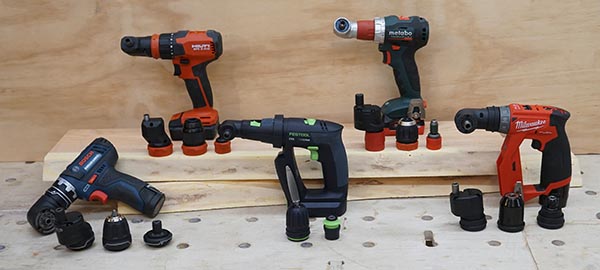
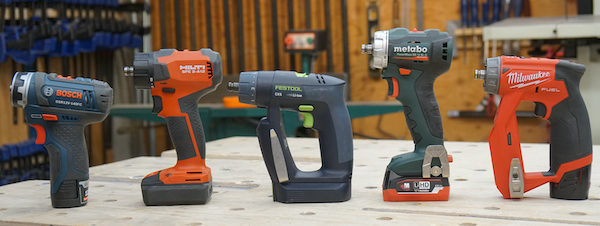
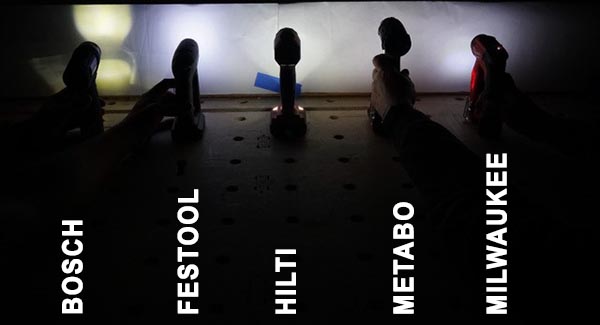

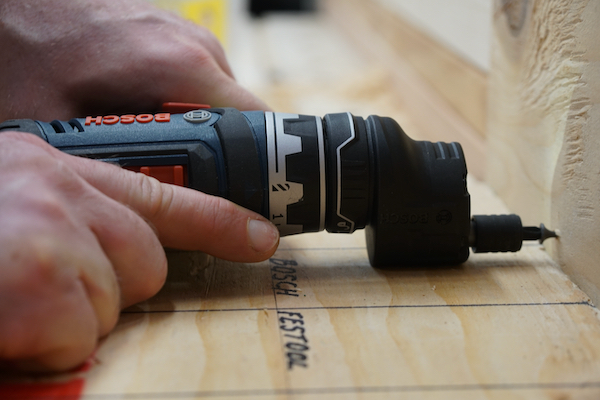
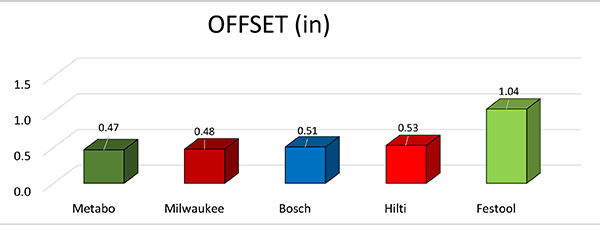
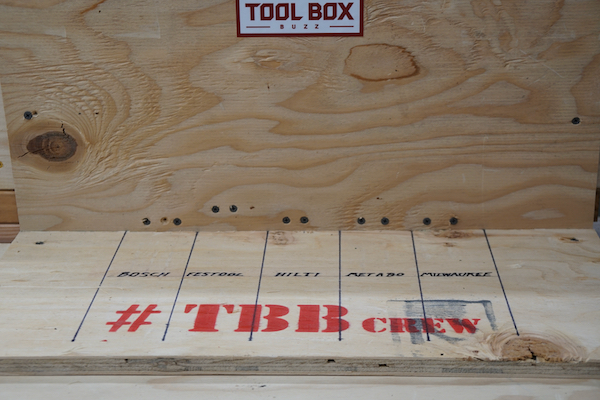
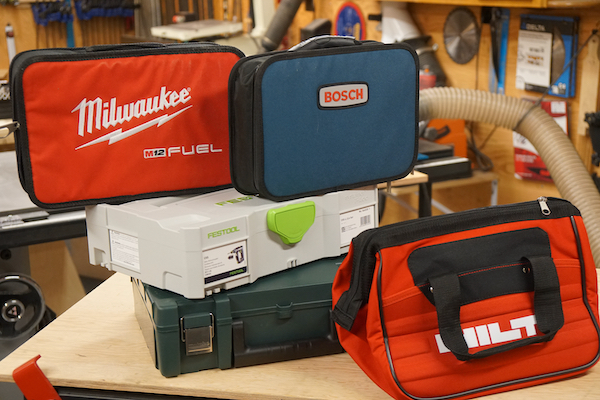
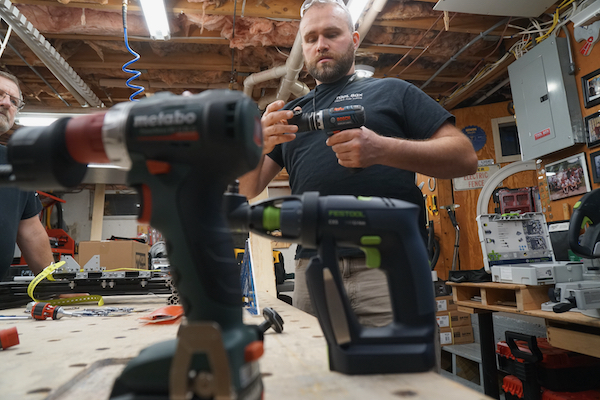
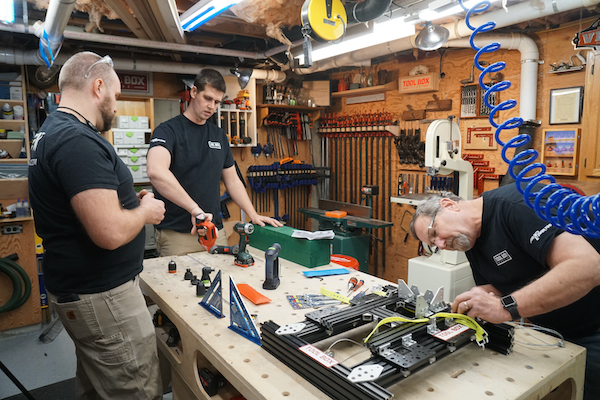

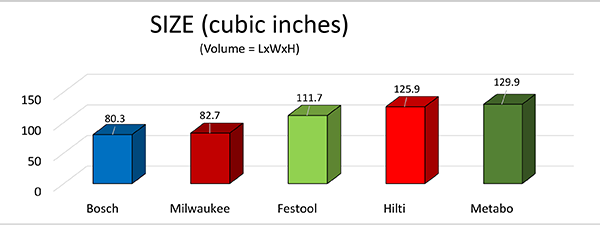
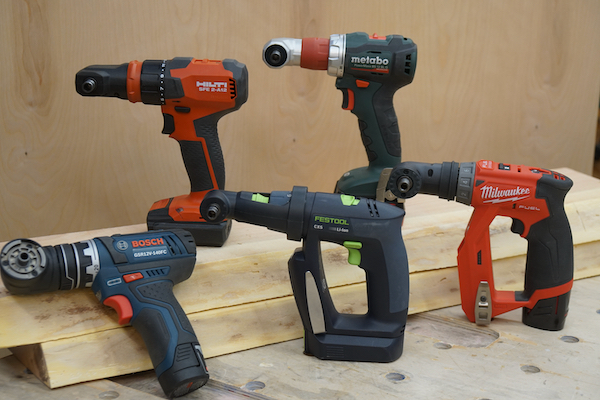
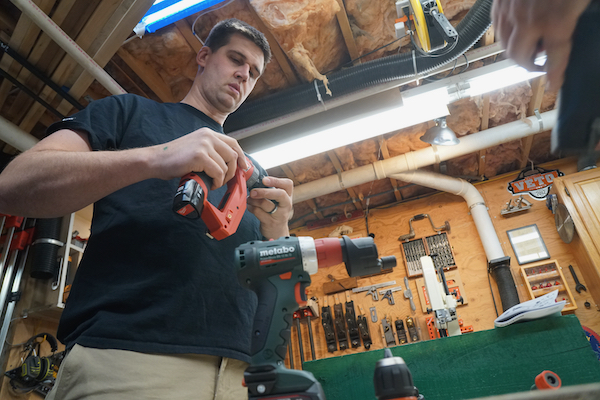
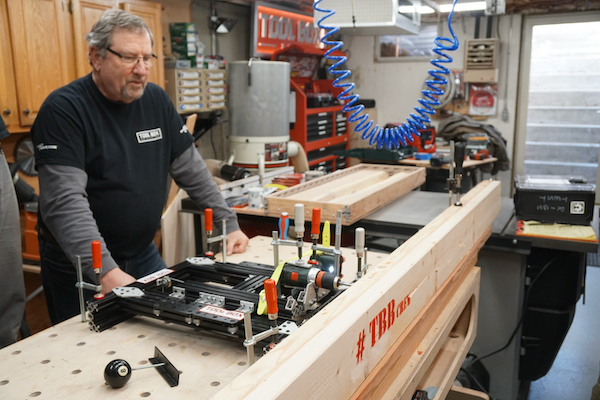
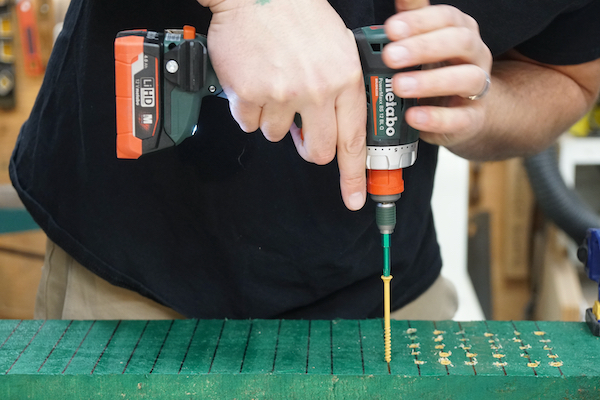
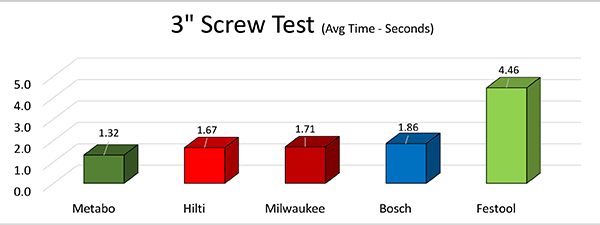
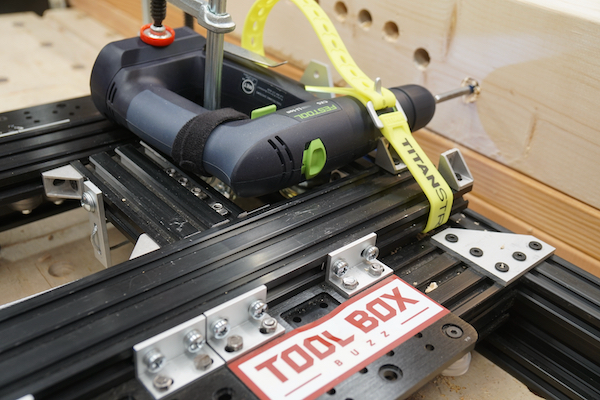
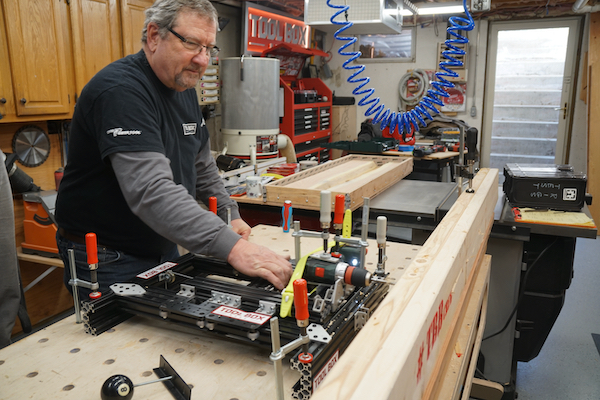
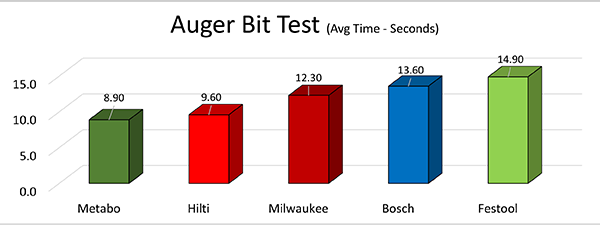













Why use the old Bosch and not the brush-less that’s replaced it?
https://www.boschtools.com/us/en/boschtools-ocs/cordless-drill-drivers-gsr12v-300fcb22-202156-p/
James – When we do these tests we reach out to every Brand and tell them about the test and ask them to send us their most recent/best tool in the category. We started this project last Fall and it appears that this newer version has just come out. We rely on the manufacturer to get us the latest models, in this case they simply missed the boat so to speak.
Wow, Milwaukee is the cheapest ? Back here in Germany the kit is even more expensive than the Festool one.
Had the Bosch brushless before I sold it, due to it’s horrible ergonomics. By far the worst screwdriver I’ve ever had. It lacked power in almost every situation. Changing the chucks is a pain in the a** It is lots of fidgeting and probing and takes lots of time and just annoys.
The bitholder from Bosch isn’t working at all. It fails to snap close most of the time and then gets stuck.. horrible.
The gear-change is so badly constructed, you need 2 hands and lots of power to swap from 1st to 2nd gear.. quite the opposite to a fast and smooth working process.
The forward-revers switch is like butter.. I have destroyed a workpiece by just breathing against it and turning the forstner reverse….
I just switched to Metabo, because Milwaukee is way too expensive(full kit costs around 350 – 400$) here in Germany and it is clearly another lvl. Bosch is good if you have to tighten 1 screw in your house once per year. Other than that I am done with Bosch tools.
Hi. I am considering buying one of these multi head tools. From my research, the Milwaukee offset uses a magnet holder where other offsets use a locking mechanism. So if you drill using the Milwaukee offset, the drill bit may stay in the hole and I’ve read that the magnet has even broken and fallen out. Anyone know if Milwaukee plans on fixing this and changing to a locking mechanism in the offset head? Thank you for responses.
We’re not aware of any issues or plans to change the design.
The $179 Milwaukee kit has no battery or charger, so your eval on cost is flawed. Also the $229 kit has two batteries so no apples to apples there either.
You also said nothing about the odd electronic switch location on the Milwaukee – a deal killer for some people, but all your reviewers ranked it highly.
Notably absent here is Dewalt and Makita – a shame.
Greg – Pricing changes nearly daily. We state that in there and it’s not a shock that the pricing has changed. DEWALT and Makita do not offer one in this category.
Did not mean to imply that you overlooked Dewalt and Makita, rather that their offering is lacking. And I know that pricing changes, but the Milwaukee has not changed price since it’s come out and the $179 kit has never included batteries or charger, and the kit with batteries and charger has never been anything but $229.
Greg…overlook? Neither company has a 12V multi-head drill offering. Not sure where you price tools, but the Milwaukee is still $229. https://www.acmetools.com/shop/tools/milwaukee-2505-22?irclickid=3e12NBVcaxyOWblxU-SAVSQkUkiQApS5x3zRzY0&irgwc=1&utm_campaign=tfratzel&utm_channel=Affiliates&utm_source=impact&utm_medium=affiliate
“the odd electronic switch location on the Milwaukee”….I have seen on other forums many complain about this also. However, my own personal use, I have drills and impact drivers from most of the top brands and have always had issues with the forward/reverse switch as I typically hit it by accident. Usually not enough to go from F to R but enough to stick it in the neutral position; for me very frustrating and having the different position for me on the Milwaukee is a big plus. I understand where some say it takes away the speed in which they can go from F to R but for me, maybe I am clumsy, I gain the speed in not having to constantly reset the button to its proper position, as I often move it inadvertently.
Just an additional follow upon the Hilti and a few things I also just noticed…
Concerning the weight, you have a purchasing choice of either their 4.0 battery pack (weight is 0.8 lb) or their 2.6 battery pack (weight is 0.5). Since most of these kits come with two batteries, going with the Hilti you then could have one of each battery. The benefit is that it lightens up the unit slightly overall, coming in a 2.0 lbs.
Another added feature that should be noted in the tool comparison is that you can go on Hilti’s website and configure the kit the way you want, around your needs, that’s huge. Seems like the Hilti is an interesting, granted more expensive option.
Again your thoughts on the Hilti and how it compares to the rest in the test would be great to hear.
Hi All…Great article btw. Though just some corrections upon the Hilti. As for the max torque number that’s listed above, 216 in-lb, that’s incorrect. After looking on Hilti’s website it states the following, 186 in-lb (soft joint), 301 in-lb (hard joint), hence 301 in-lb max torque. Looking at the performance of the Hilti something seemed off and now it makes more sense since it’s max torque is 301 in-lbs. This now changes the torque rankings btw.
Also on another note, a huge difference with the Hilti is that you can build out your own designed kit. If you wanted to go with the 2.6 battery it only weighs 0.5 lbs, if you go with the 4.0 battery it weighs 0.7. So that would put the lowest total weight of the unit at 2.0 lbs or 2.2 lbs respectively. This now changes the weight rankings btw.
While on the topic of weight the Metabo on various other sites including Metabo’s own website put it at 2.4 lbs making it the heaviest of all the drill/drivers. I had a hard time believing the largest unit came in as the second lightest. Again something looked off. This now changes the weight rankings too.
I have been looking to purchase one of these drill/drivers and am now seriously considering the Hilti, granted it’s expensive. With the corrections with the max torque and corrections on weight it changes your scores. Curious to know your thoughts after researching all of this, since it changes the ratings significantly in my opinion.
Steven – Thanks for the input. When we published this article the Hilti was not available in the US, and they had almost no information available to share with us (no web landing page, no specs, etc, just the tool). We do so many of these head-to-head test that we seldom go back and make changes, just not enough hours in the day. However, because we publish all the data, you can do your own ranking to make your choice. The Hilti is a solid choice for sure. Good luck
Steven, thanks for pointing out these discrepancies. It is good to know since I am very interested in buying the Hilti set. It is quite powerful and the ergonomics are way better than the fat grip on the Bosch. I wish the chuck and trigger response would have been addressed in this article.
Been looking into buying one of these since the old Rigid JobMax days. Still want one but found some errors.
Milwaukee Width: 95″?
Bosch Width: 1″?
Going along with why I am curious about width is the added functionality of combining the right angle attachment with the end attachment. For example, combining the 90 with the offset bit holder. I have yet to see an image, but from what I have researched, the Bosch and Milwaukee have the ability to do an offset attachment+90. Combine that with the tool width and it can tell you the overall width of the final tool configuration in a tight space (the primary function of these tools). Yet I haven’t found any reviews yet discussing such a scenario. Or any 90+chuck configuration either.
It appears that the Festool, Metabo, and Hilti do not have the ability to combine attachments to the 90.
The other thing is, having the ability to combine attachments seems to add value, however, does the final length make these configurations too long as well?
Otherwise, this is a better review of these tools than anything I have yet to read online. Thank you.
Interesting comment/questions. We didn’t mess around with these and try those configurations. I suspect you’re correct that the Bosch and Milwaukee can do that based on the type of chuck.
Hey there PB…
Just to let you know you CAN combine attachments to the 90 on the Hilti. It was something I also looked into btw.
Just google the Hilti and you’ll see plenty of pics of of attachments latched onto the 90. Plus I confirmed it with recently when I called Hilti directly with a boat load of questions. I hope this helps.
As for the Metabo, I don’t know if that one can do it. I didn’t consider the Metabo since it’s the largest and heaviest, and the key here is having a unit that can get into tight locations and also being light weight. Though the weight is not much greater, but still the heaviest. Yet the size of the Metabo, which is considerable compared to all the others, gets difficult to use in locations with limited space. Which in a real world environment is what these units are designed for. Plus the last time I looked on their website (when I first posted here) not all of the various heads came in their kit, you had to purchase one or two of the heads separately on their website, which I thought was absurd. Granted that could have changed now.
For what it’s worth I had played around with Bosch, one of my friends has it. The frustration with how the Bosch head attachments accidentally disengaging when adjusting the clutch drove me nuts, As for the Milwaukee, I tired it out locally, it’s a nice unit, but is very unbalanced, since so much of the weight is far forward on the heads, plus the oddly placed forward/reverse mechanism felt unnatural.
So that has lead me to the Hilti which I ordered recently after doing lot of research. Granted it’s expensive, but the build quality is top notch, it has very solid performance all around, and their long term warranty is better than all the rest. All of that really sold me on it. The main draw back I could see to some is the cost.
Hope this help you out…good luck with whichever you choose.
Thanks Steven, that is helpful.
I think the PR people for all of these tools need to go to school because they are doing a horrible disservice to the capability of these tools. Like, why do I need to find do deep dive research to find random screenshots.
It doesn’t help that you can’t really go into a store to hold them either.
It does look like the Hilti may be the best because it combines the pros of the Milwaukee and Bosch. But the price is a tad high ($309 with 1 battery). I could buy both a Bosch (brushless version is going for $149 special right now on Amazon, was, now back to $229) and Milwaukee (going $199 with 2 batteries on Amazon) for like $42 more. If the Hilti had more power then the $premium might be worth it. I’m sure the Hilti will probably drop though as time goes on.
It seems like it would be best to wait for lower prices if these are fluctuating all over. I think any of them for $150 and at least one battery isn’t too bad.
Steven – which batteries did you get with your Hilti kit?
I owned the Bosch for a week and didn’t like the grip or the way the different heads connect. The Milwaukee’s forward reverse switch would not work with the way I use the drill. I really like the Hilti for power and grip.
However I also really like the feel of the Festool. The trigger speed control is great. The magnetic bit retainer and the pocket clip would be very useful too. Clutch settings seem accurate and are able to go quite low for smaller screws. The centrotec system really helps with bit wobble. The CXS does not have an off-set chuck but when I tried it with the right angle adapter it gets really close. The head on their 90 is very small compared to the others, the Bosch is especially large. The Festool has less power than the competition though.
Festool or Hilti? Still deciding.
Hey there PB and Robert…
Ok, so I’m going to address both of your questions in here as best as I can. Concerning all the brands, they’re all good but each has its own drawbacks. Personally after a obtuse amount of time researching and trying out a few of them (Bosch and Milwaukee), I felt the Hilti was the best choice for me. Yes, the price is significantly higher than the rest, except for the Metabo, since it does not come with all the attachment heads which drives the price into the same realm of the Hilti. Yet that was in late December, early January, so that may have changed. As for the Festool, it’s a great unit but in my opinion needs to be updated to keep up with the competition. To be honest the Milwaukee I strongly considered, it was just that the far forward weight issue due to the design which I was not crazy about. When I handled the Hilti it certainly felt more balanced due to the design. Though the Hilti battery mounting design could limit it getting into some close quarters that the Milwaukee could easily handle. Again each has their pros and cons.
PB, you mentioned if the Hilti had more power, maybe it would be worth the $$$….If you’re referring to the max torque number that’s listed in the article above, 216 in-lb max torque, that’s incorrect. After looking on Hilti’s website and speaking with the Hilti reps, these are the actual torque specs, 186 in-lb (soft joint), 301 in-lb (hard joint), hence 301 in-lb max torque. Again when the article was written the Hilti was barely in the marketplace so specs info was scarce.
So in reality the only one that is greater in terms of power is the Metabo. Yet I’m not surprised of that since it’s the largest tool by far in terms of sheer size, it certainly should be more powerful. So out of all the units above the Hilti torque power comes in 2nd place.
Robert, you asked about which batteries I got with the Hilti, I went with two of the 4.0 batteries. The weight difference between the 2.6 vs the 4.0 is very very little, plus their website and the reps at Hilti both recommended to go with the 4.0 batteries. Better tool performance, the battery lasts longer, and the slightly heavier weight of the 4.0 battery helps balance out the unit. (Something that I noticed with the Milwaukee, if you used a larger/heavier battery it would help counteract the front forward weight issue).
Now, price…that is a bit tricky…I have a commercial account with Hilti, so going that route gets me business pricing.
A route that some people simply can’t go, and then have to go with consumer pricing. Needless to say it did save me some change…the kit, (without the silly canvas bag), two 4.0 batteries, and one charger, shipped to me for $300 dollars.
Ironically all of it is stored in a Milwaukee Packout box with foam inserts. I liked the Milwaukee Packout system so I just repurposed one of the boxes I had for the Hilti kit, such sacrilege some Milwaukee or Hilti fans may say lol.
So I hope that answers some of the questions you both had. Honestly all of these tools are good. Depending upon your own experience with trying out any of them, you may feel one is better than another. Personal perspective plays a role.
When it came to my experience, and research, I liked the Hilti the best. Good luck everyone, choose wisely lol.
Steven – Thanks for sharing, this is great feedback! You should be on the team!!! Yes…when we did this comparison the Hilti unit wasn’t available in the US, they gave us a preview model, they didn’t even have published specs at the time. We struggled with the idea of not including Hilti but thought the demand and interest in it would be high, and leaving it out would be a bummer for some. We just don’t have the time to go back and edit every article with updated info so hopefully people understand. Thanks again for sharing your thoughts.
My issue is different. I have arthritis in my hands, but I still do a lot of woodwork. I tried both the Milwaukee and the Bosch, in both cases after inserting the battery I could not remove it for charging bare handed. The Milwaukee was the harder one because the areas to squeeze are not directly opposite. I finally got them out using a spring loaded clamp. This is a product killer for me. This may also be because the batteries are rather small and round rather than mounting on the drill like a foot.
You may be better off using the 18V versions.
Robert,
I really enjoy your presentation and appreciate the rigor you and your team perform tests.
My feedback is that price should NOT be ranked or weighted in your reviews. Price is subjective to the person purchasing and takes away from the well-thought-out scenarios and tests that you put the tools through. Let the people watching make the decision on whether they want to pay the money for accurately rendered testing and unbiased recommendations.
We appreciate the feedback. For each person that says price shouldn’t, just as many say we should. The good news…all the data is there. You can leave out the price and tabulate your own winner 😉
The difficulty in removing the battery in both the Milwaukee and Bosch does not seem to be an issue with many of you. I have had a number of people try to remove the battery from the Bosch, the model I finally chose. Half could not do it. In fact Bosch acknowledged the problem when I called. I made a fixture that solved the problem. It is an 1/8″ aluminum plate that is shaped to do the squeezing when the drill is pushed in. This was not a possible approach with the Milwaukee because of its design or I would have bought that one. The Bosch complete kit with 2 batteries was $161 making it the cheapest of the lot. By the way I still have and use my old Panasonics a 12V and a 15.6V. The trigger pull is longer and allows better speed control when doing precision work.
Thank you for this evalution. After watching the video and reading this article. My choise was Metabo. I’m very pleased of it so far. Very handy tool.